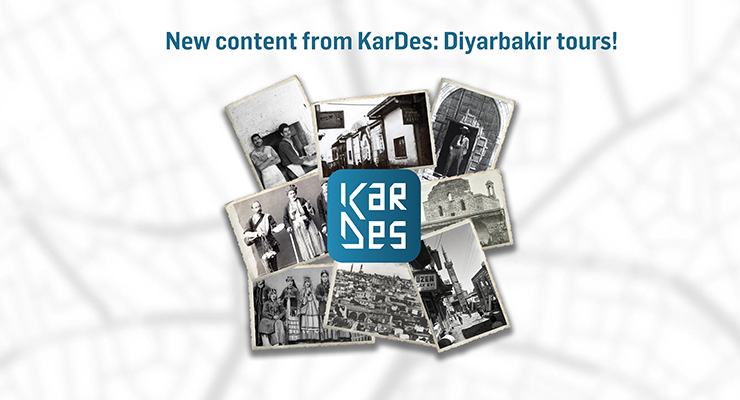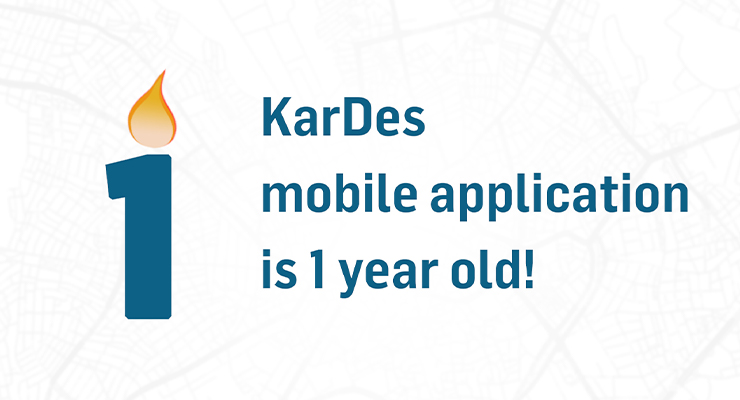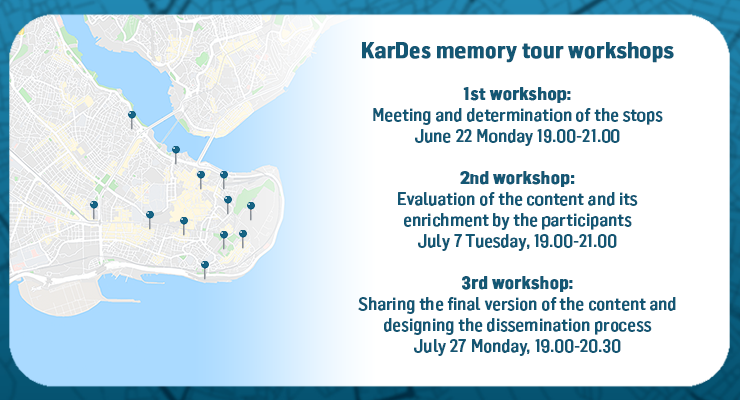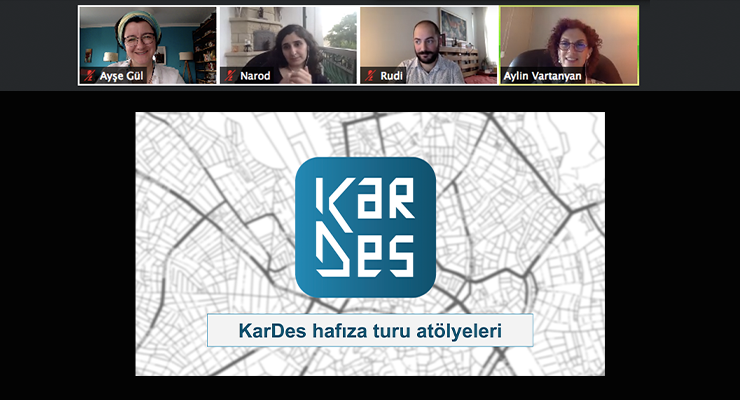KarDes Multicultural Memory Tour Guide mobile application brings together the multicultural history and memory of Diyarbakir with the newly added Hançepek, the Other Neighborhood and Yenişehir tours! With the new Diyarbakir tours on KarDes, you can discover the stories of the locals and the structures, and witness the change and transformation of the neighborhoods.
You can listen to the stories of Pasha Hammam, Tümes’ Bakery, Viktorya Apartment, Puşucu Street and silk workshops, and more from those who lived here in the past or still live here today, through more than 70 videos compiled from oral history interviews.
Diyarbakir memory tours, each consisting of 9 to 11 stops and walkable in approximately two hours, are narrated in Turkish by Ceren Moray, Fehmi Karaarslan, and Naim Dilmener, and in English by Ayla Jean Yackley. You can explore the hidden stories of Diyarbakir either by walking through its streets or from the comfort of your home or any place you choose.
Click to download KarDes: Multicultural Memory Tours Guide mobile application for free.
Hançepek Tour
In Hançepek, one of the largest Christian neighborhoods of Suriçi, Armenians, Chaldeans, Syriacs, and Jews lived until the 1980s. However, violence against non-Muslims in the late 19th and early 20th centuries drastically changed the city’s demographic landscape. The Christian population, mostly composed of merchants and artisans, was almost entirely wiped out. After 1915, Armenians who migrated from surrounding villages settled in this neighborhood. From the 1950s onward, more and more families gradually left for Istanbul or abroad. The armed conflicts and military operations that began in 2015, followed by demolition activities, led to the near-total destruction of the neighborhood.
This tour, which aims to shed light on the past and present of the neighborhood, starts in Balıkçılarbaşı and follows Yenikapı Street, tracing the remnants of streets that no longer exist today. The tour highlights surviving landmarks such as Surp Giragos Armenian Church, Mar Petyun Chaldean Church, and Pasha Hammam, as well as the stories of those who once lived in the neighborhood, including Mıgırdiç Margosyan and Deli Ferho from the Jewish Quarter.
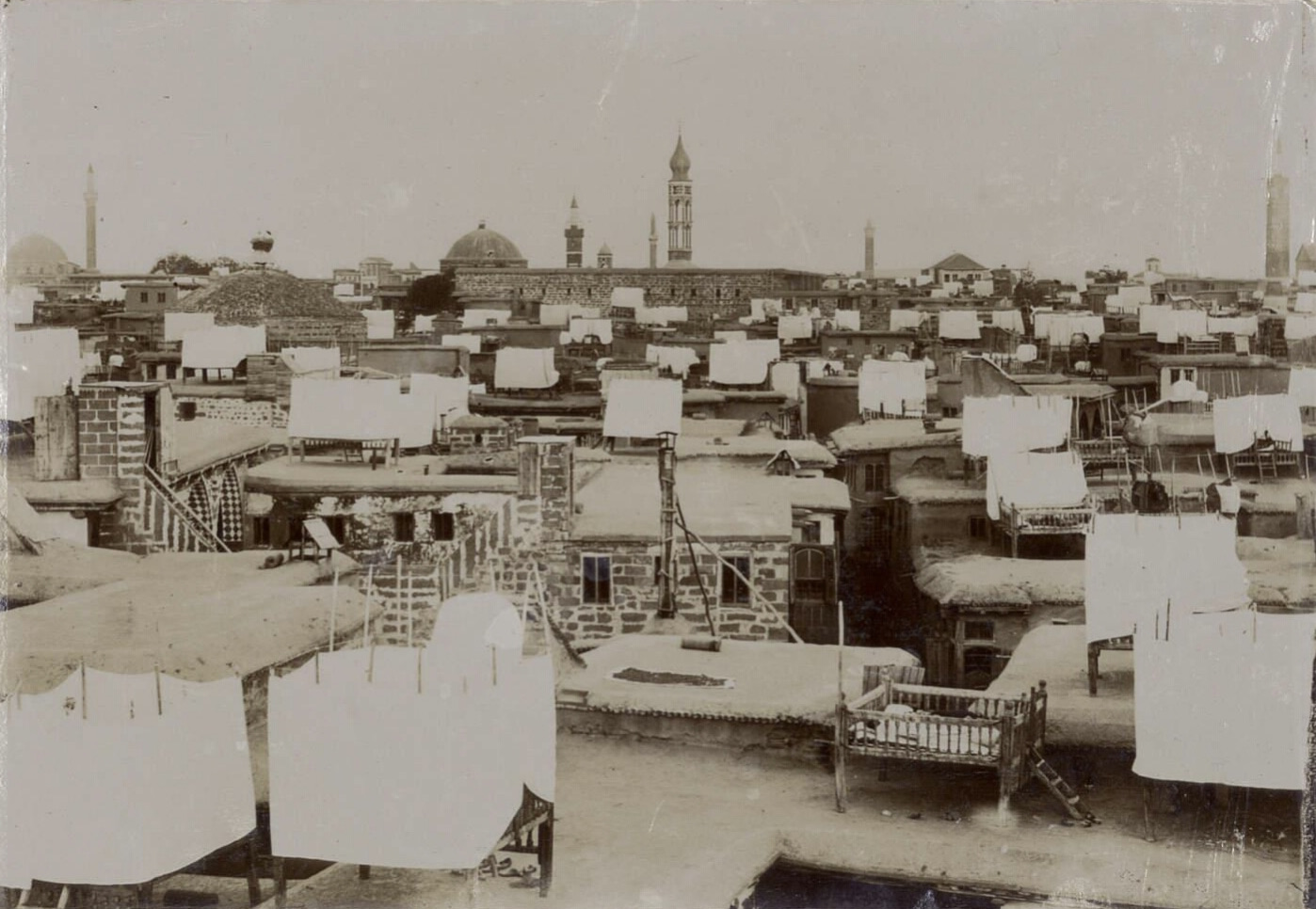
The Other Neighborhood Tour
The area between Mardin Gate and Urfa Gate, commonly known as "Öte Mahalle" (the Other Neighborhood) among locals, was once a neighborhood where Syriacs and Armenians lived in large numbers. The name of the neighborhood comes from the fact that it was once located outside the city walls, and the residents of Hançepek on the other side of the city referred to it as the “other neighborhood.” Most of the residents were engaged in jewelry-making, silkworm breeding, and puşi weaving. These crafts, carried on by Armenian and Syriac masters, were passed down from generation to generation, becoming an essential part of the local culture and economy. The silk weaving workshops of these artisans were located in this neighborhood, where the rhythmic sounds of weaving looms could be heard like a sweet melody as one passed by. During and after 1915, many of the churches, schools, and houses in the neighborhood were destroyed, seized, or left in ruins.
This tour explores the streets of Suriçi and highlights places such as the Church of the Virgin Mary, Surp Sarkis Armenian Church, Puşucu Street, and Deva Hammam, along with the stories of people who once lived in the neighborhood, such as Naum Faiq and the Baker Tümes.
In this excerpt from our interview with Diyarbakir writer Silva Özyerli, you can listen to Puşucu Street and the silk workshops, one of the stops of the tour:
Yenişehir Tour
The Yenişehir district outside the city walls began to take shape with the modernization and urbanization process in the Republican era. The urban development in Yenişehir proceeded in a planned manner, making it the second district to be opened for settlement after Suriçi. Until the 1950s, it was a region where civil servant lodgings and offices were located. In later years, with the opening of shops, hotels, and entertainment venues, the neighborhood became a hub for the city’s commercial and social life. The neighborhood began to transform in the 1990s and entered an urban renewal process after the Maraş earthquakes in 2023.
This tour covers the Ofis and Vilayet neighborhoods of the Yenişehir district: It starts from Dağkapı, which extends beyond the walled city of Suriçi, and ends at the Diyarbakir Railway Station, which is right at the entrance to the Bağlar district. The tour includes places such as the Touristic Hotel, Dilan Cinema, Viktorya Apartment, and the Sümerbank Factory, as well as the stories of people etched in the city's memory, such as Albert Gabriel and Harutyun Sarafyan.
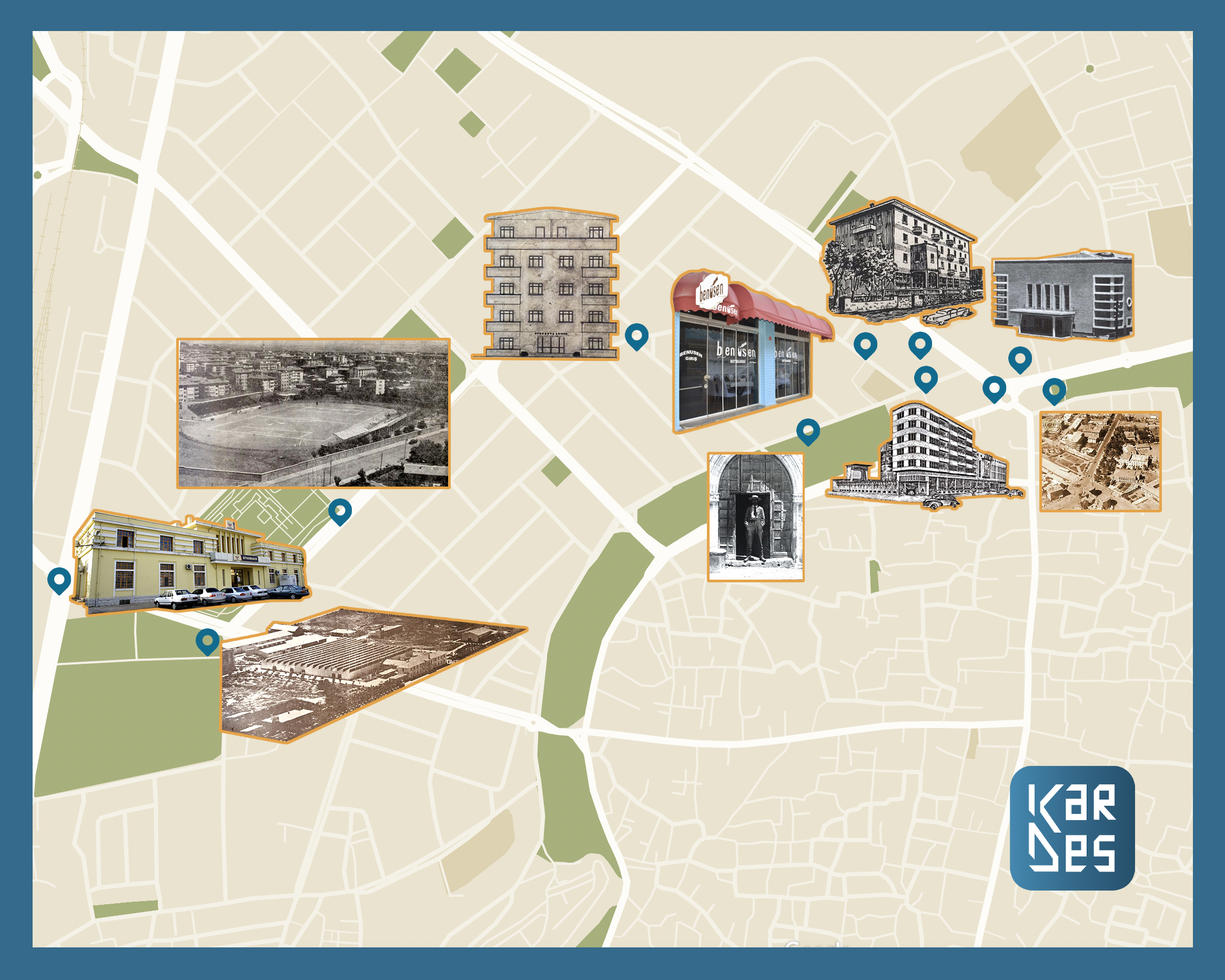
How were the KarDes Diyarbakir contents created?
KarDes mobile application project, which began in 2018, continued in 2024 with the support of the German Cooperation, the Calouste Gulbenkian Foundation, and the Chrest Foundation. Within the scope of the project, which aims to make Diyarbakir’s multicultural heritage and untold stories more visible, three memory tours were curated.
Online Workshops and Hançepek Pilot Tour
The Yenişehir Tour, one of the KarDes Diyarbakir tours, was developed through online workshops held in July. In these two-phase workshops, participants prepared texts on topics of their choice related to the district’s history. After an editorial review, the tour was published on KarDes. In the pilot tour held in Diyarbakir in May, the Hançepek Tour was walked together with the participants, and after the comments and evaluations, the tour content was finalized.
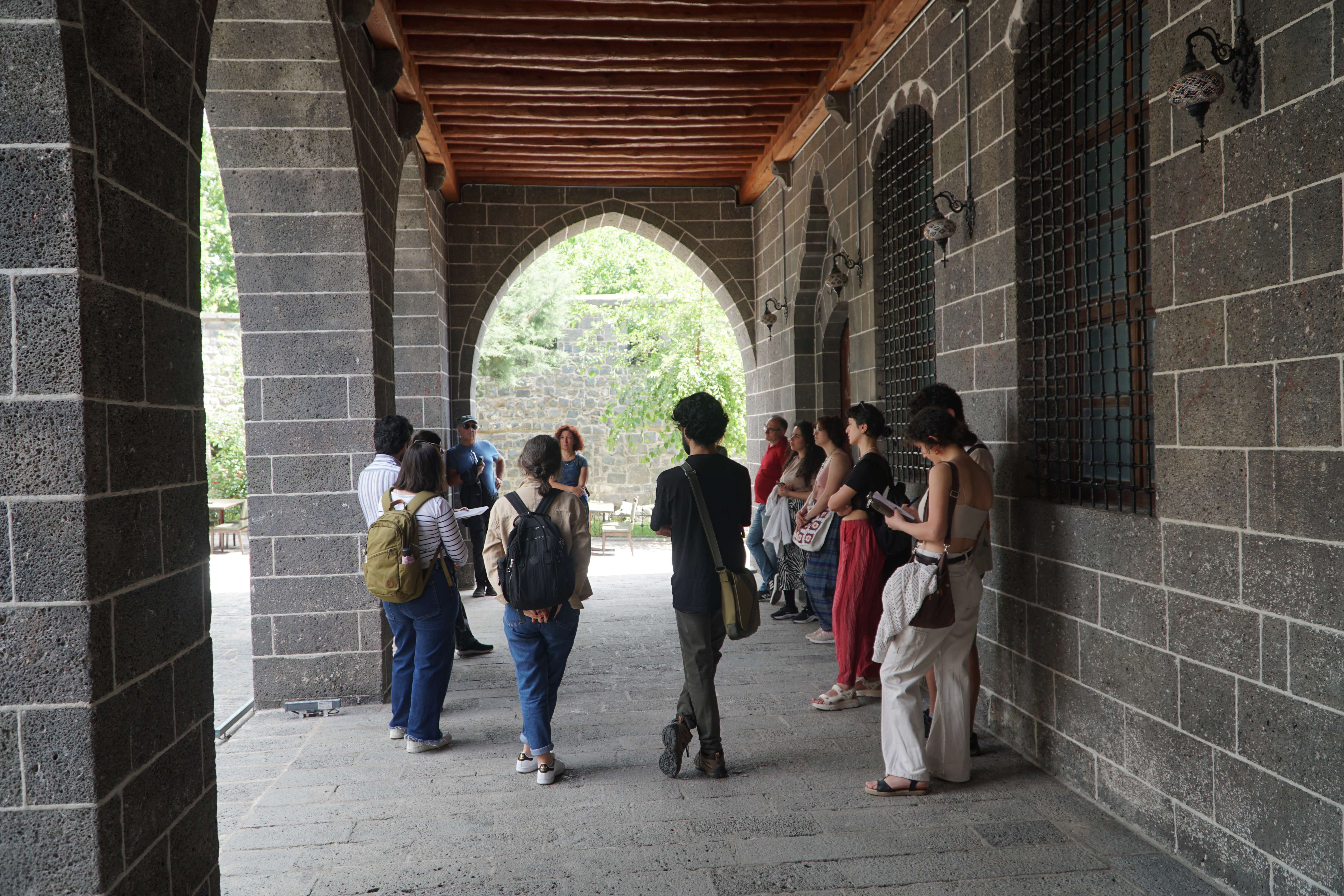
Fieldwork
In order to determine the inventory of Diyarbakir’s cultural heritage sites, many printed and digital resources were researched, and archival photos were examined to find out the stories of the buildings and people existing in the city’s memory. In May, Diyarbakir’s cultural heritage was traced by visiting the designated locations with guides. The inventory notes gathered will continue to be added to the Turkey Cultural Heritage Map and the 'Discover' section of the KarDes mobile app.

Launch Event
On December 25, 2024, the KarDes Diyarbakir project and its memory tours were introduced at an event held in Wejêgeh Amed. The presentation titled ‘KarDes Diyarbakir: Routes, Places, and Memories,’ began with an opening speech by Lal Laleş from the Wejêgeh Amed team, followed by Damla Barın and İpek Mayıs Oğuz from the KarDes team, who presented the project process and the newly prepared content.



